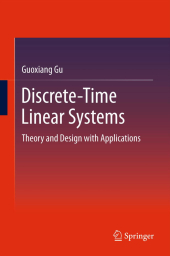 Neuerscheinungen 2014Stand: 2020-02-01 |
Schnellsuche
ISBN/Stichwort/Autor
|
Herderstraße 10
10625 Berlin
Tel.: 030 315 714 16
Fax 030 315 714 14
info@buchspektrum.de |

Guoxiang Gu
Discrete-Time Linear Systems
Theory and Design with Applications
2012. 2014. xvi, 452 S. 235 mm
Verlag/Jahr: SPRINGER, BERLIN; SPRINGER US; SPRINGER 2014
ISBN: 1-489-98907-2 (1489989072)
Neue ISBN: 978-1-489-98907-9 (9781489989079)
Preis und Lieferzeit: Bitte klicken
This book explores system theory, including optimal state feedback and optimal state estimation, and its role in system design, with application to feedback control systems and wireless transceivers, plus system identification and channel estimation.
Discrete-Time Linear Systems: Theory and Design with Applications combines system theory and design in order to show the importance of system theory and its role in system design. The book focuses on system theory (including optimal state feedback and optimal state estimation) and system design (with applications to feedback control systems and wireless transceivers, plus system identification and channel estimation).
Introduction.- Signals and Systems.- Linear System Theory.- Model Reduction.- Optimal Estimation and Control.- Design of Feedback Control Systems.- Design of Wireless Transceivers.- System Identification.- Appendix A: Linear Algebra.- Appendix B: Random Variables and Processes.- Appendix C: Transfer Function Matrices.
From the reviews:
"In the monograph linear, discrete-time, finite-dimensional control systems with variable or constant coefficients are considered. ... The monograph contains also many numerical examples, which illustrate the theoretical considerations and results. The monograph is well written and well organized and presents many valuable and interesting new results concerning optimal control problems for linear discrete-time systems." (Jerzy Klamka, Zentralblatt MATH, Vol. 1245, 2012)
Professor Gu has taught the graduate level courses in systems engineering and design for many years and this book has evolved from course notes. As he has taught the course he has encountered students from the control area who want to pursue their study in wireless communications and students from the communication and signal processing areas who want to learn optimal estimation theory in order to solve their research problems.


